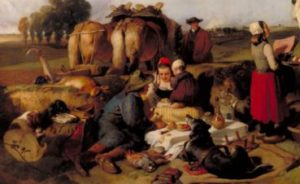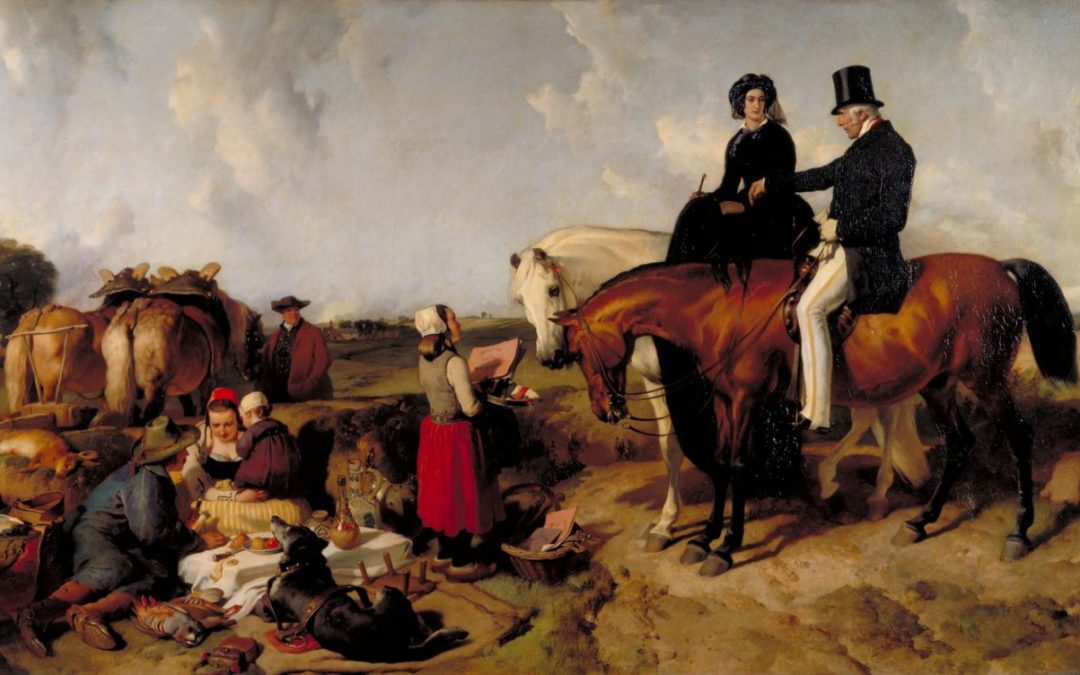Landseer’s A Dialogue at Waterloo is a portrait of Arthur Wellesley, Duke of Wellington, and his daughter-in-law, Lady Douro, visiting the battlefield. As the Duke describes the scene as thirty-five years before, they are accosted by a young peasant girl selling souvenirs of the battle. Behind her, enjoying a picnic is her family.

The great irony is that after so many years, the girl does not know she addresses the man who defeated Napoleon in June 1815. The man on the horse is just another sightseer to the girl born long after. The last thing Wellington needs is some ersatz memento.
The picnic on the battlefield especially nonplused the art reviewer for Blackwood’s Magazine. “We are not clear as to what it all means,” he writes, “some of the objects seeming rather have been dragged in than naturally to have come thither; the tablecloth spread in the plowed field appearing rather out of character.”
Landseer meant to honor Wellesley, then eighty years old. What the reviewer missed is that the scene alludes to Isaiah’s remonstrance, “They will beat their swords into plowshares and their spears into pruning hooks. Nation will not take up sword against nation, nor will they train for war anymore.” Landseer’s gentle dialog is between the old warrior and the picnickers; the former battlefield and the new plowlands
See Landseer’s A Dialogue at Waterloo (1847). Oil on canvas. Tate

